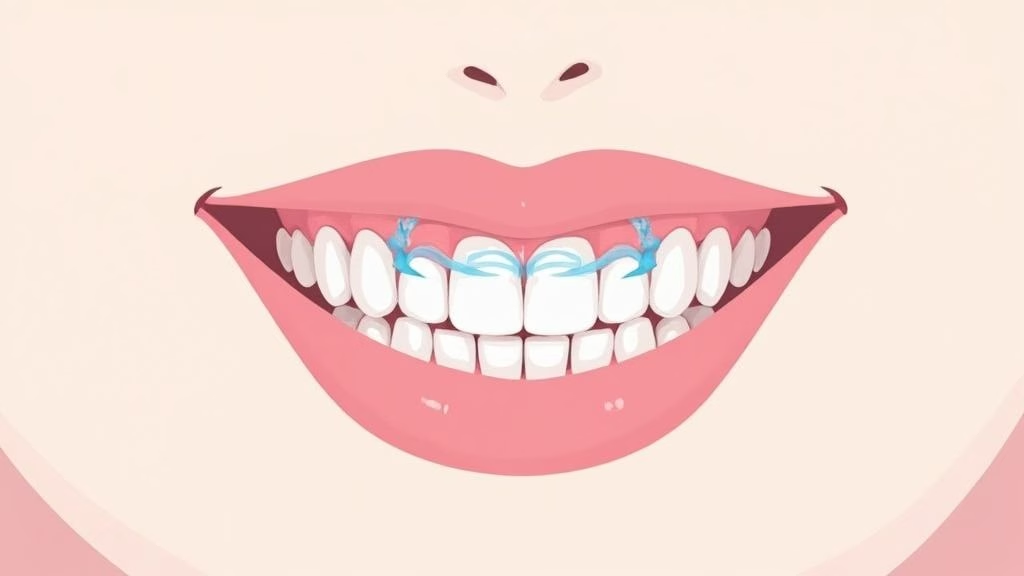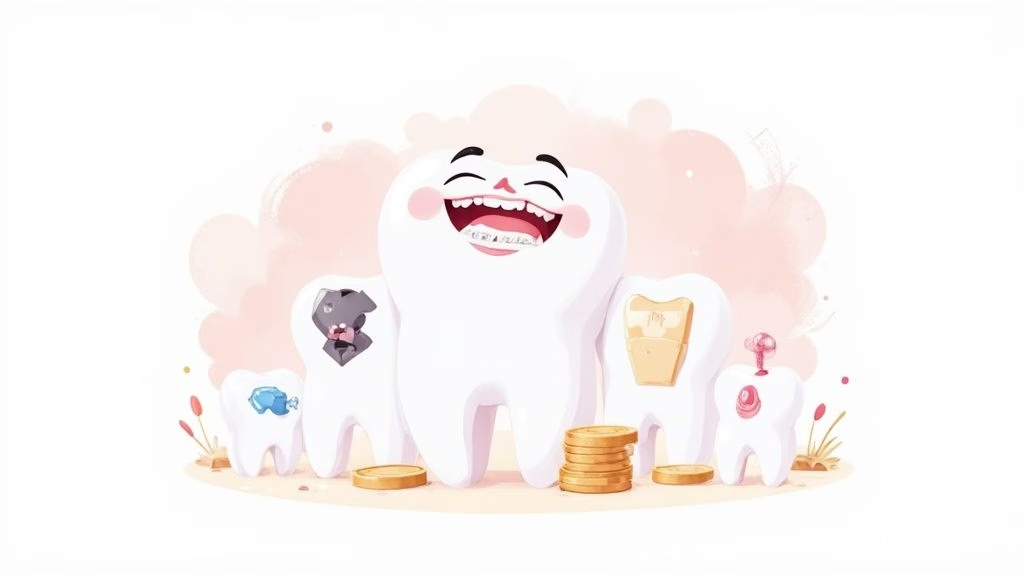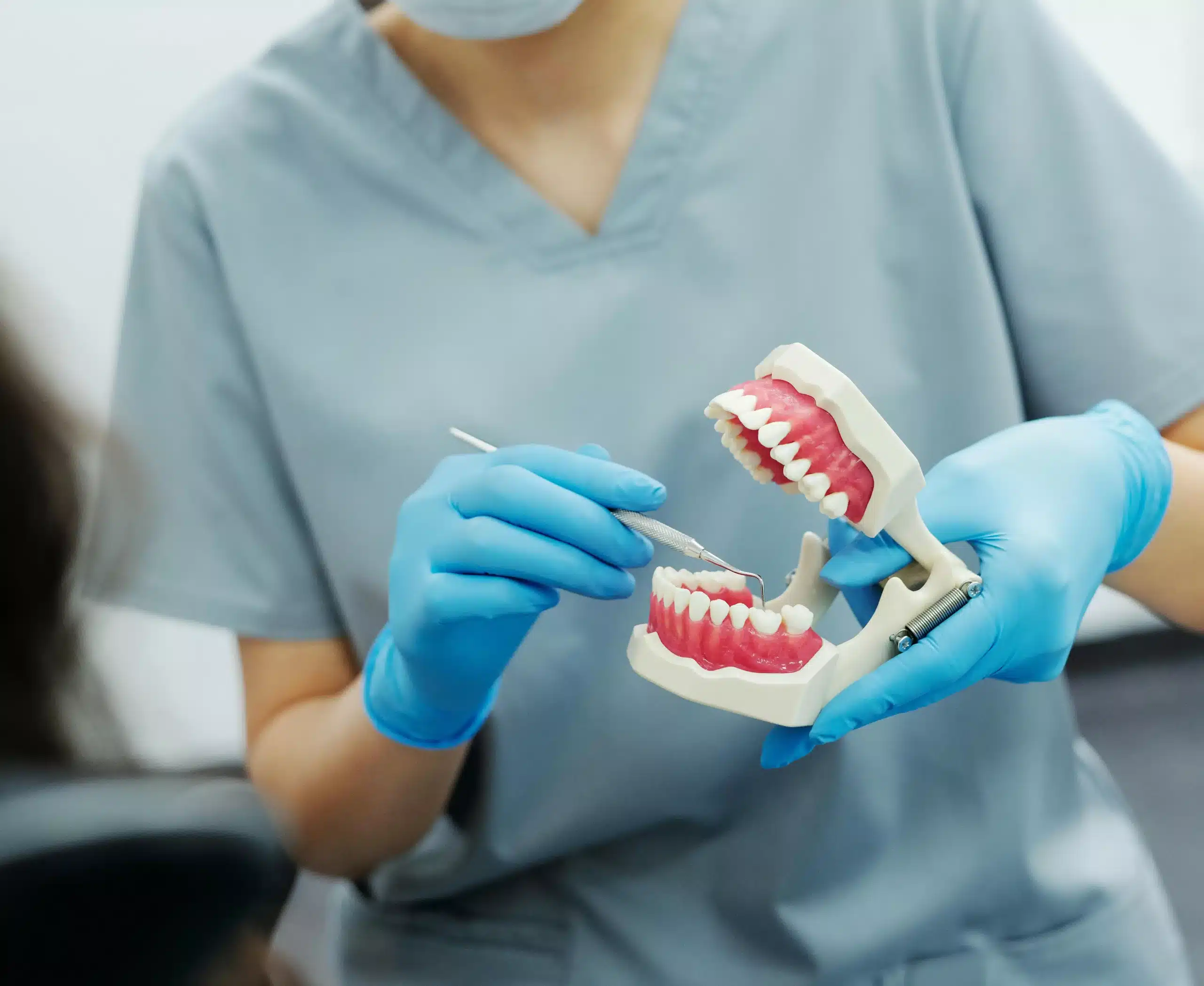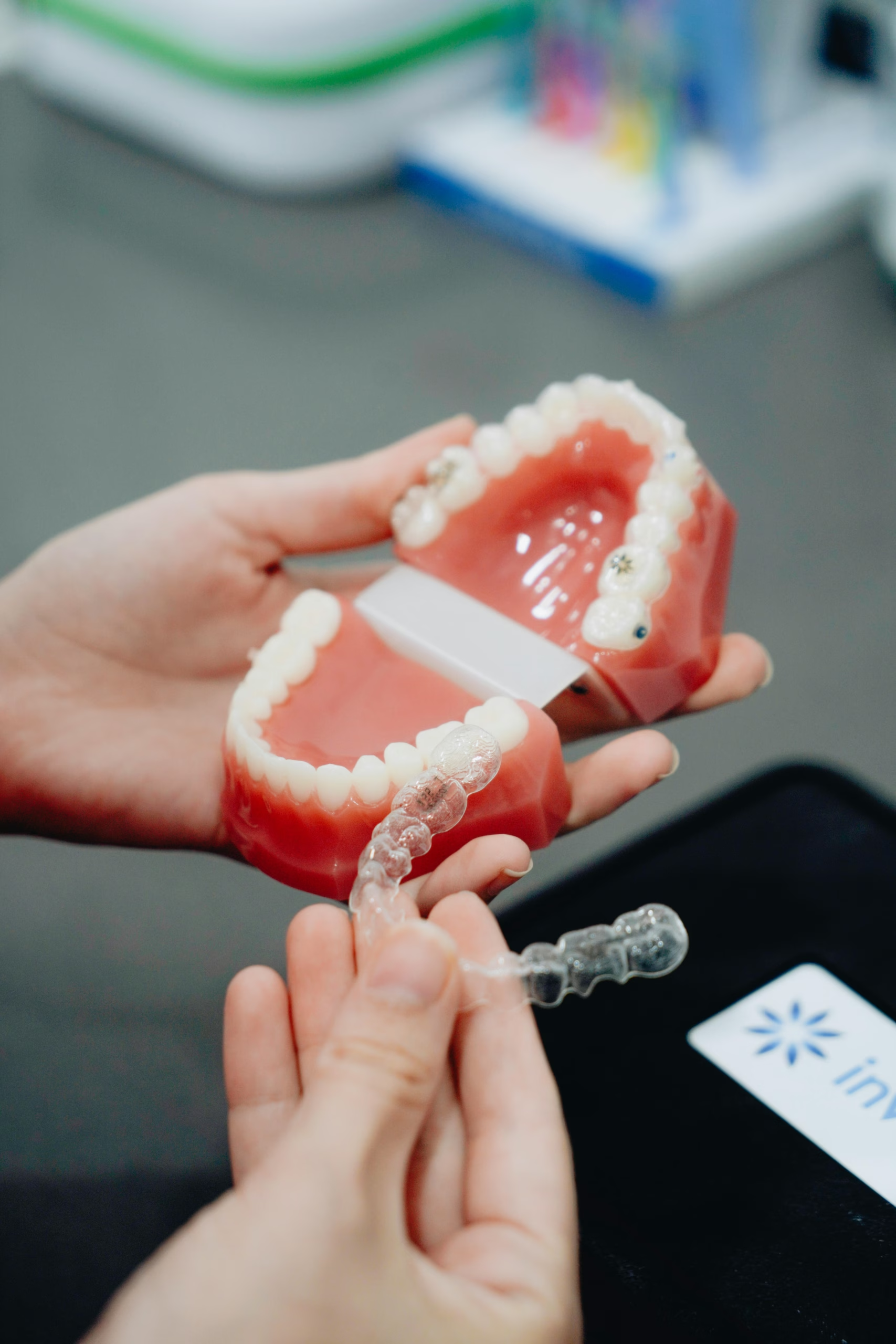How to Clean Tongue Properly for Fresher Breath
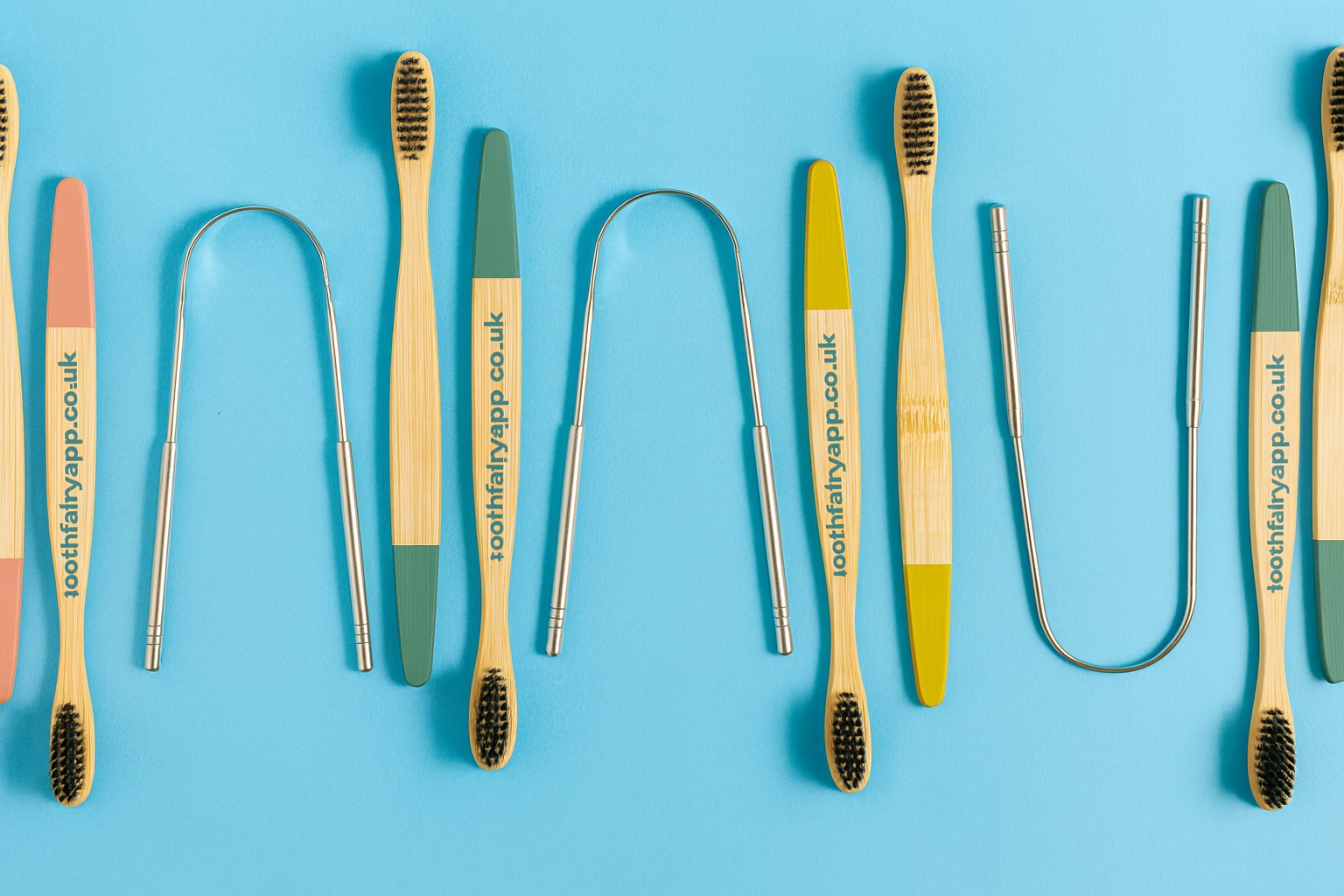
If you’re already brushing and flossing twice a day, you might think your oral hygiene routine is sorted. But there’s a crucial step many of us miss: cleaning our tongue. It’s not just about brushing your teeth; getting rid of the gunk on your tongue is one of the simplest and most effective things you can do for your mouth.
Why a Clean Tongue is Your Secret Weapon for Oral Health
Think about the surface of your tongue. It’s covered in tiny bumps and grooves—the perfect hiding place for bacteria, leftover food particles, and dead cells to build up. Over time, this creates a visible film that can cause a whole host of issues.
This bacterial buildup is the number one culprit behind halitosis (that’s the clinical term for persistent bad breath). It can also lead to a coated or discoloured appearance. For anyone wondering why their tongue looks a bit off, understanding white tongue causes and treatment is a great place to start.
The Hidden Impact on Your Health and Smile
The benefits of tongue cleaning go way beyond just tackling bad breath. When you scrape away that layer of bacteria, you’re not just cleaning; you’re actually sharpening your sense of taste. Suddenly, food becomes more flavourful. You’re also lowering the overall bacterial load in your mouth, which is the main gateway to the rest of your body.
This is especially important if you’re investing in your smile with treatments like clear aligners. Here at Toothfairy, we see firsthand how a solid foundation of daily habits makes all the difference in our smarter, more affordable cosmetic work and teeth straightening solutions. A clean tongue helps ensure that nothing gets in the way of your progress.
Failing to clean your tongue properly can ramp up the levels of volatile sulphur compounds in your mouth. These are a major cause of halitosis, an issue that’s thought to affect up to 30% of the UK population at some point.
It’s great that a 2021 UK survey found 77% of adults brush at least twice a day, but tongue cleaning often gets overlooked. Even the NHS points to its importance for keeping plaque under control. You can dig deeper into the official data by reading the findings on oral health in England.
Choosing the Right Tool for Tongue Cleaning
When it comes to cleaning your tongue properly, the tool you pick can make all the difference. Lots of us just give our tongue a quick once-over with the toothbrush we’re already using, and while that’s a start, dedicated tools are designed to do a much more thorough job. This is especially true if you’re investing in dental work and want to protect that new smile.
A quick swipe with your toothbrush is certainly better than nothing. The bristles can definitely help to dislodge some of the gunk sitting on the surface. But let’s be honest, toothbrushes are built for the hard, smooth enamel of your teeth, not the soft, bumpy texture of your tongue.
This is where a tongue scraper really shines. It’s a tool that’s been specifically engineered for one job: to glide across your tongue’s surface and effectively squeegee away the biofilm—that sticky, smelly layer of bacteria. In fact, studies have shown that scrapers can be much more effective at removing the volatile sulphur compounds that are a major source of bad breath.
Scrapers Versus Brushes
So, which one should you be reaching for? A toothbrush is convenient because it’s already in your hand, but you run the risk of just smearing the bacteria around instead of actually getting rid of it. A scraper, on the other hand, is designed to collect and lift all that debris off your tongue in one clean sweep.
To help you decide, let’s break down the key differences between these two common tools.
Tongue Scraper vs Toothbrush: A Quick Comparison
| Feature | Tongue Scraper | Toothbrush |
| Design | A smooth, contoured edge designed to glide over the tongue’s surface. | Bristles designed for cleaning hard tooth enamel. |
| Effectiveness | Highly effective at collecting and removing the bacterial biofilm. | Can dislodge some debris but may also spread bacteria around. |
| Gag Reflex | Lower profile design often triggers less of a gag reflex. | The bulky head can be uncomfortable and easily trigger gagging. |
| Hygiene | Often made from metal (stainless steel, copper), which is easy to clean and sterilise. | Plastic and nylon bristles can harbour bacteria more easily. |
| Best For | A deep, thorough clean and noticeable reduction in bad breath. | A quick, convenient clean when you don’t have a scraper handy. |
Ultimately, a dedicated scraper is going to give you a far superior clean. But the most important thing is consistency.
A dedicated scraper often gets the nod from dental professionals. Its design applies even pressure across the tongue, removing a significant amount of biofilm without triggering that pesky gag reflex – a common complaint with bulky toothbrush heads.
The best tool is always the one you’ll actually use day in, day out. If you’re on a journey to a straighter smile with clear aligners, perhaps using smarter, more affordable options like those from Toothfairy, then your oral hygiene has to be top-notch. Adding either a scraper or a dedicated tongue brushing step ensures your entire mouth stays healthy and fresh throughout your treatment.
This handy visual shows you just how crucial tongue cleaning is for your overall oral health.
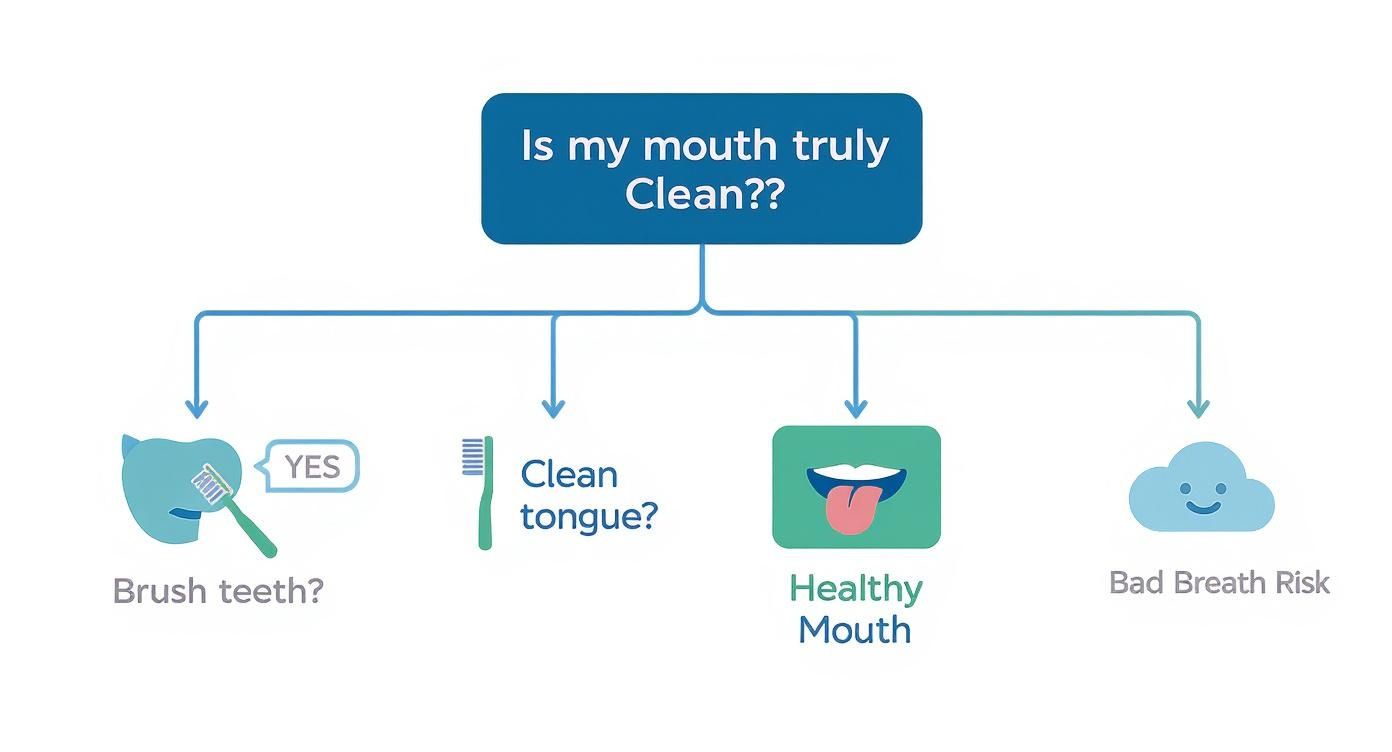
As you can see, skipping this simple step could leave you with bad breath, even if you’re brushing your teeth like a pro.
Mastering Your Tongue Cleaning Technique
Alright, you’ve got your tool. Now, let’s get the technique down pat. Knowing how to clean your tongue properly is what turns this simple habit into a genuinely powerful part of your oral health routine. The goal here is a gentle but firm removal of that bacterial film, not an aggressive scrub.
The trickiest bit for most people is getting started. Stick your tongue out comfortably and try to place your scraper or brush as far back as you can without gagging. I know, it’s an odd sensation, but this is where most of the odour-causing bacteria love to hang out.
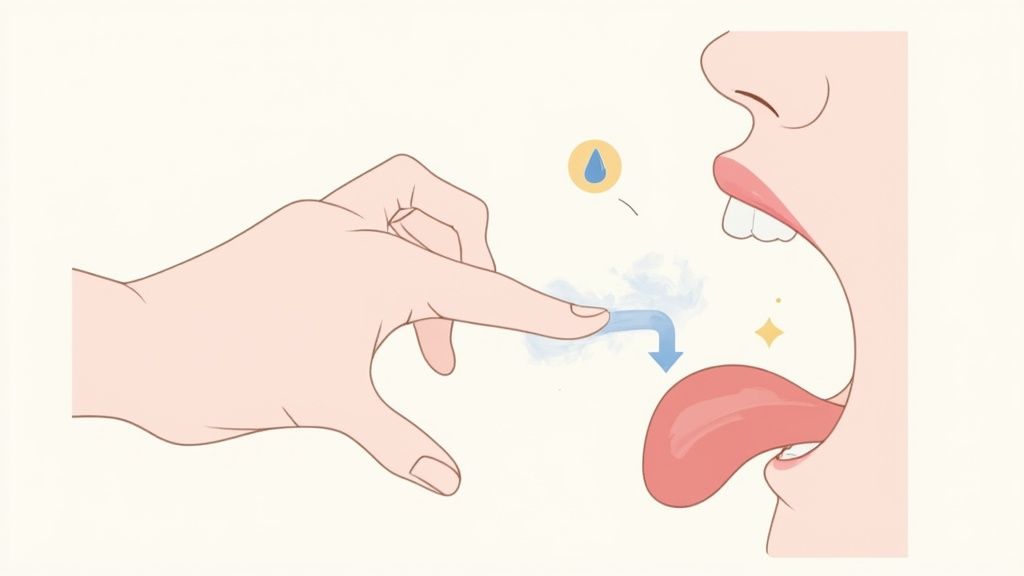
A Gentle and Effective Approach
Once your tool is in position, apply a little bit of pressure and pull it forward toward the tip of your tongue in one smooth motion. Don’t press down hard—think of it as skimming the surface, not scouring it. After that first pass, you absolutely must rinse the gunk off your scraper or brush under the tap. If you don’t, you’re just moving the bacteria around.
Repeat this scraping motion 3 to 5 times, remembering to rinse the tool after each and every pass. Try to cover the entire surface of your tongue—the middle and both sides. You’ll probably be surprised (and a bit grossed out) by the whitish or yellowish gunk that comes off. That’s a good sign it’s working!
This simple routine is crucial for everyone, but it’s especially important if you’re undergoing dental treatments. For example, keeping your mouth impeccably clean is vital when you’re using clear aligners from a provider like Toothfairy. It ensures your journey to a straighter smile is as healthy as it can be. Unlike some specific aligner brands that can be costly and inconvenient, we focus on making our patients’ overall oral hygiene a top priority.
Tips for Managing the Gag Reflex
The gag reflex is a common hurdle, but don’t let it stop you. If you find yourself struggling, here are a few practical tips that I’ve found really make a difference:
- Breathe Through Your Nose: Focusing on slow, deep breaths through your nose can help relax your throat and calm that gagging sensation.
- Don’t Go All In at Once: Start a bit further forward on your tongue. Over a few days, as you get used to it, you can gradually work your way further back.
- Try Humming: It sounds a bit strange, but humming while you scrape actually engages your throat muscles in a way that makes it harder for the gag reflex to kick in. Give it a go!
When’s the best time to do this? First thing in the morning, right after you brush your teeth. This clears out all the bacteria that have built up overnight, giving you genuinely fresh breath to start your day.
If you follow these pointers, tongue cleaning will quickly become a comfortable and effective part of your daily routine. Like anything with oral care, consistency is everything. Make it a habit, and your mouth will thank you for it.
Common Tongue Cleaning Mistakes to Avoid
Knowing the right way to clean your tongue is only half the story. Just as important is knowing what not to do. It’s easy to make a few common slip-ups that can make your efforts less effective, or even cause a bit of discomfort.
Let’s look at how to sidestep these pitfalls so your tongue-cleaning routine is always doing more good than harm.
Don’t Be Too Rough
One of the biggest mistakes I see is people being far too aggressive. It’s a natural instinct to think that scrubbing harder gets you a better clean, but your tongue is a surprisingly sensitive muscle.
Applying too much force can easily irritate the delicate surface and even temporarily mess with your taste buds. The last thing you want is a sore tongue or a dulled sense of flavour, so always remember: a gentle glide is all you need.
Keep Your Tools and Habits Clean
This one seems obvious, but it’s amazing how often it gets overlooked. You absolutely must clean your scraper or brush properly after every single use. A quick rinse under the tap just won’t cut it, especially if you don’t do it thoroughly after each pass.
Think about it – reusing a dirty tool just puts all that bacteria you worked so hard to remove right back where it started. It completely defeats the purpose.
Consistency is also key. Cleaning your tongue every now and then is better than nothing, but it won’t give you those lasting benefits. To really make a difference, it needs to be an unshakable part of your daily routine, right alongside brushing your teeth.
When we neglect parts of our mouth, like the tongue, we’re essentially rolling out the welcome mat for dental decay and gum disease. A lack of consistency is a huge issue across the UK, creating the perfect environment for these problems to take hold.
The numbers really back this up. The Denplan Oral Health Survey highlighted that nearly a third of Brits brush less than twice a day, and a staggering 29% of NHS patients never visit a hygienist. This points to a wider trend where comprehensive oral care, including the tongue, often falls by the wayside.
For a deeper dive into these statistics, you can check out The Great British Oral Health Report.
Making Tongue Cleaning a Daily Habit
Let’s be honest, building a new habit can be tricky. The secret isn’t finding more time, but linking the new habit to one you already have. The easiest way to make tongue cleaning stick is to simply tack it onto your daily brushing and flossing. Think of it as the final polish in your oral care routine.
Most people find that the first thing in the morning is the perfect time. Overnight, bacteria build up on your tongue, which is a major cause of that less-than-fresh morning breath. A quick scrape right after you brush sweeps all that away, leaving your mouth feeling genuinely clean and ready for the day.
Consistency is Everything
This small addition isn’t just about feeling fresh; it’s about creating an oral environment where your teeth and gums can thrive. This is particularly important if you’re investing in your smile with cosmetic treatments or clear aligners. A cleaner mouth means better results, simple as that.
Here at Toothfairy, we’re all about building great daily habits as the foundation for smarter, more affordable dental care. Keeping your tongue clean is a fantastic way to protect the investment you’ve made in your smile, whether that’s through cosmetic work or straightening your teeth with our aligners. It’s a tiny step that makes a huge difference.
A clean tongue isn’t just about looking good; it’s a cornerstone of your overall health. Your mouth is the gateway to the rest of your body. Reducing the bad bacteria in your mouth can help support a healthier immune system and even improve your sense of taste.
Ultimately, whether you decide to clean your tongue in the morning or just before bed, the most important thing is doing it every single day. Make it as automatic as brushing your teeth.
Your Tongue Cleaning Questions Answered
When you first start cleaning your tongue, it’s natural to have a few questions. Let’s clear up some of the most common ones so you can feel confident in your new routine.
How Often Should I Be Cleaning My Tongue?
For most of us, once a day is the sweet spot. I always recommend doing it first thing in the morning. This clears away all the bacteria that have accumulated overnight, giving you a properly fresh start to your day.
If you struggle with bad breath that just won’t quit, you might want to try cleaning it twice a day – morning and night.
Could I Accidentally Damage My Taste Buds?
This is a common worry, but you can put it to rest. When done correctly, tongue cleaning is completely safe and won’t harm your taste buds.
In fact, you’ll probably find the opposite is true. Removing that film of gunk can actually make your food taste better and more vibrant. The only rule is to be gentle; there’s no need to apply a lot of pressure or scrape aggressively.
What Does That White Coating on My Tongue Mean?
That white film you sometimes see is usually just a harmless mix of bacteria, tiny food particles, and dead cells. It’s quite normal, and regular tongue cleaning is often all it takes to get rid of it.
If you notice the coating is unusually thick, won’t go away, or feels sore, that’s a sign to book a visit with your dentist to get it checked out.
Beyond the basics, many people have specific concerns about their tongue health; for instance, you might be interested in knowing what Vaper’s Tongue is and how to address it.
At Toothfairy, we believe excellent daily habits are the foundation of a healthy smile. For a smarter, more affordable way to handle dental emergencies, get cosmetic dental work done, or straighten your teeth, visit us at https://www.toothfairyapp.co.uk.
Last updated on October 27, 2025

Toothfairy Care Team
Toothfairy, is the world's smartest dental app, that connects patients to a dentist for a range of issues, from emergencies, cosmetics, prescriptions to virtual exams.
Toothfairy Care Team
Toothfairy, is the world's smartest dental app, that connects patients to a dentist for a range of issues, from emergencies, cosmetics, prescriptions to virtual exams.
